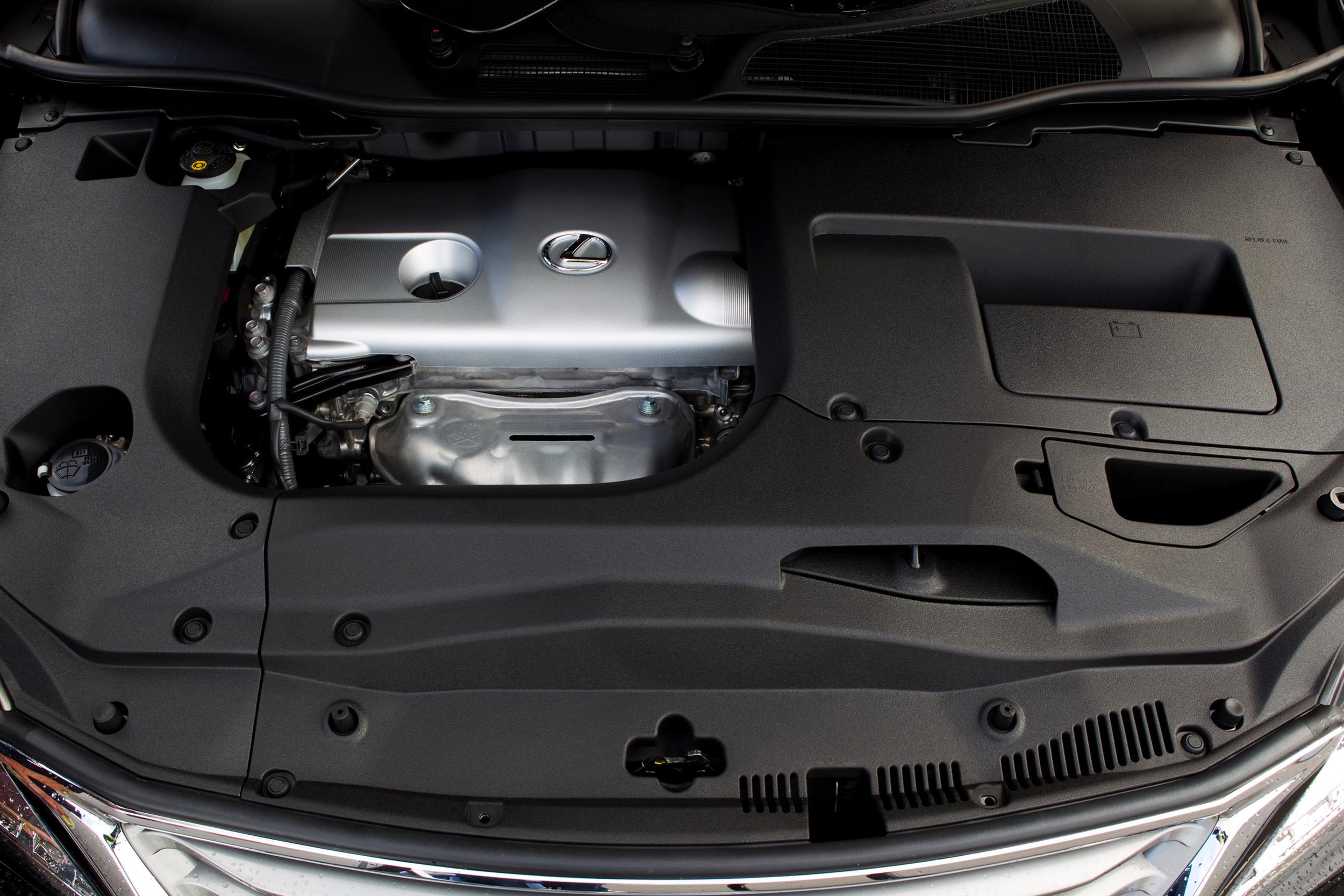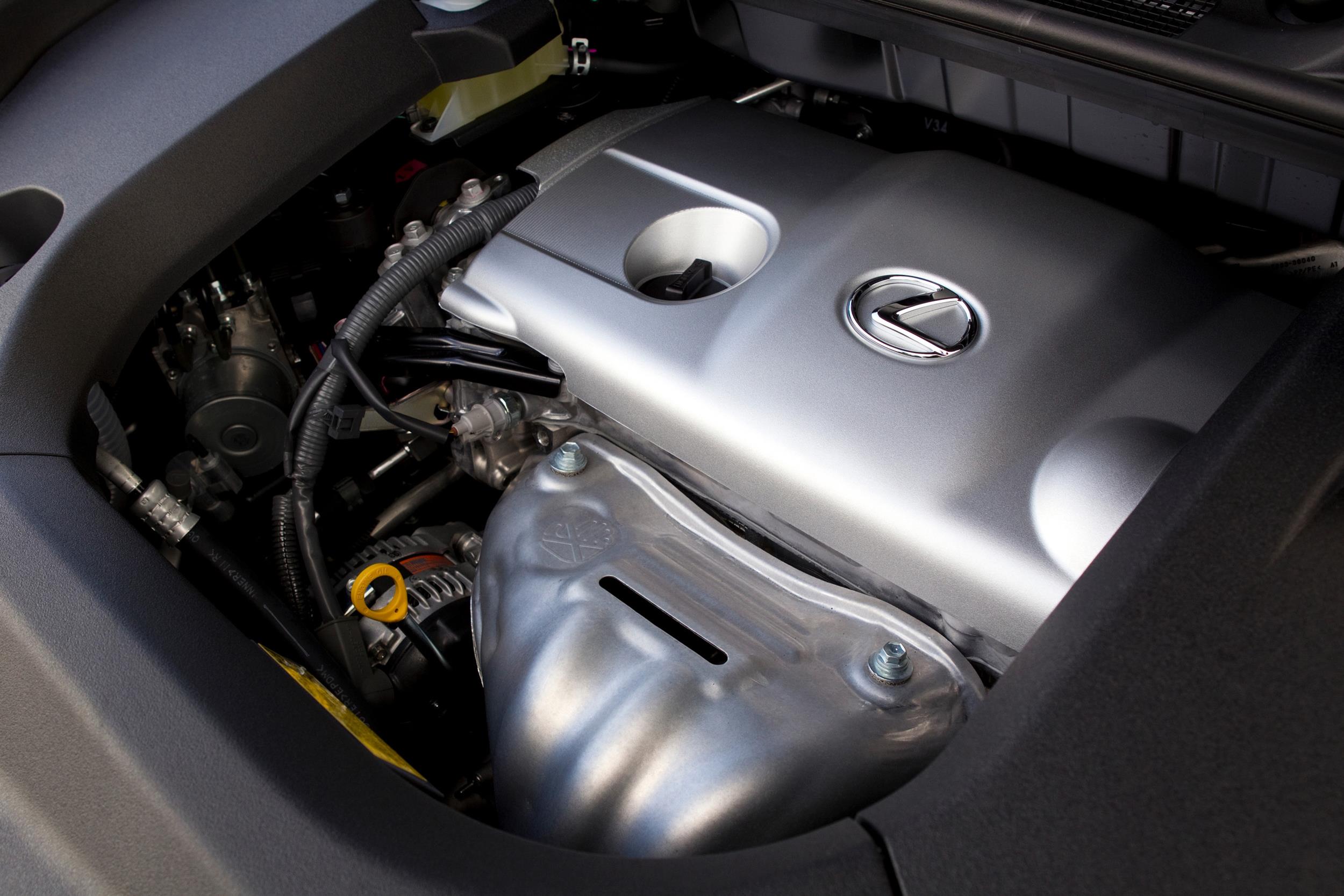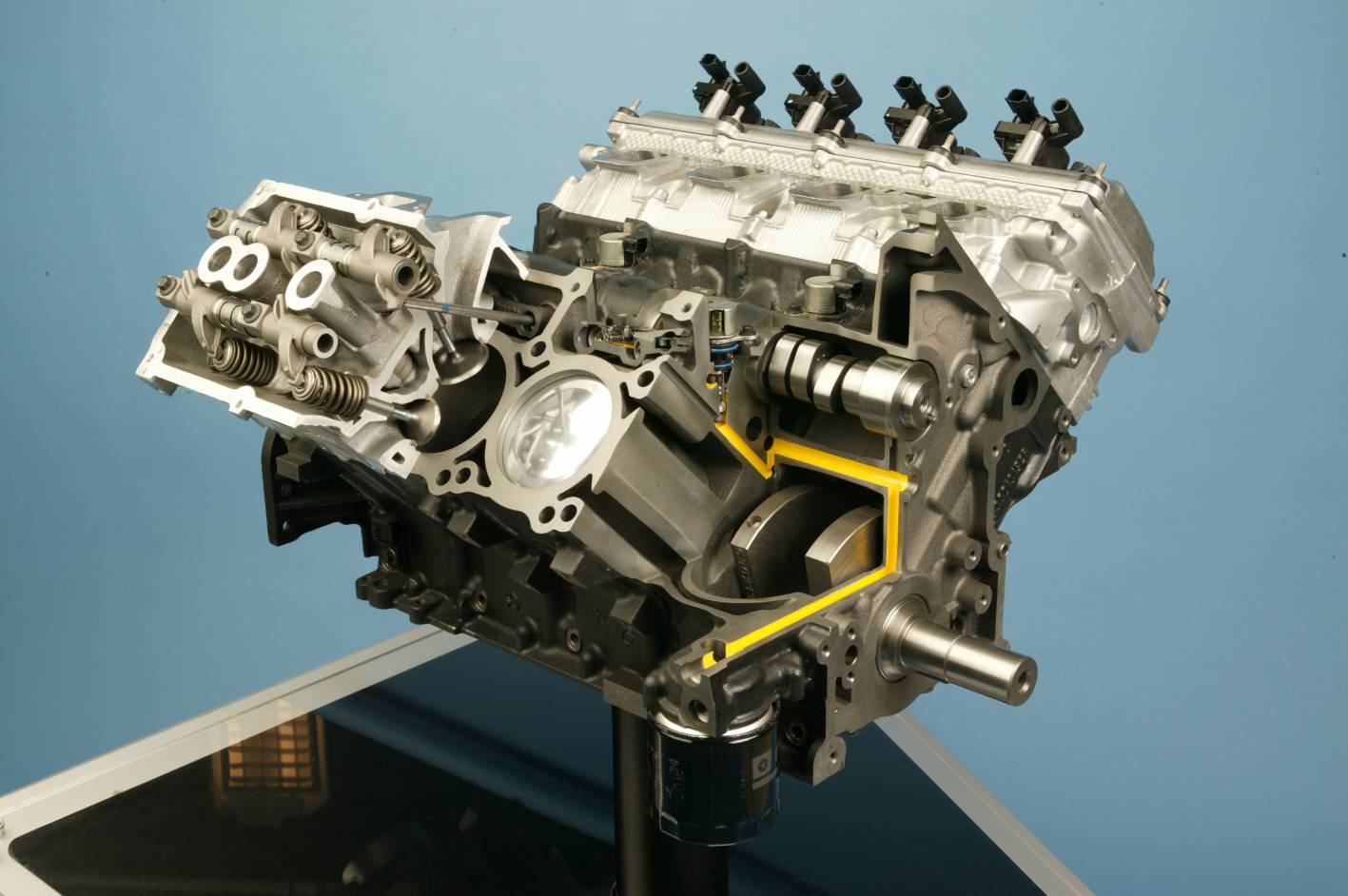Introduction
Toyota’s 1AR-FE was a 2.7-litre inline four-cylinder petrol engine. For Australia, the 1AR-FE engine has only been offered in the Lexus AL10 RX 270. In international markets, however, it has powered the Toyota Venza, Highlander and Sienna.
Features of the 1AR-FE included its:
- Die-cast aluminium block and crankcase;
- Offset crankshaft;
- Double overhead camshafts with roller rocker arms;
- Dual VVT-i; and,
- 10.0:1 compression ratio.
| Engine | Trans. | Years | Peak power | Peak torque | |
|---|---|---|---|---|---|
| Lexus AL10 RX 270 | 2.7-litre petrol I4 (1AR-FE) | 6sp auto | 2012-15 | 138kW at 5800rpm | 252Nm at 4200rpm |
1AR-FE block
The 1AR-FE had am open deck, midi-skirt cylinder block that was made from die-cast aluminium. With its 90.0 mm bores and a 105.0 mm stroke (7.0 mm greater than the related 2AR-FE), the 1AR-FE engine had a capacity of 2672 cc. With the cylinder bores, the 1AR-FE had ‘spiny-type’ cast-iron liners which were manufactured so that the casting exteriors of the liners had irregular surfaces for better adhesion between the liners and the cylinder block.
The 1AR-FE block also contained:
- Oil jets for cooling and lubricating the pistons and bores;
- Water passages between the cylinder bores so that coolant could flow and keep the temperature of the cylinder walls uniform; and,
- A shallow bottom water jacket used to reduce the volume of engine coolant for faster warm-up. The water jacket included a water jacket spacer to suppress water flow in the bottom of the water jackets and guide the coolant in the upper area of the water jacket for uniform temperature distribution. As a result, the viscosity of the engine oil that acted as a lubricant between the bore walls and the pistons was lowered.
Within the die-cast aluminium crankcase, the 1AR-FE contained:
- Two balance shafts to counteract the secondary inertial forces that were generated twice for each rotation of the crankshaft. The crankshaft had helical gear that was pressed in the no.3 counterweight that was used to drive the no.1 balance shaft, while the no.2 balance shaft was gear-driven from the no. 1 balance shaft. To cancel secondary inertial forces, the balance shafts rotated twice for each rotation of the crankshaft to generate inertial force in the opposite direction. To cancel the inertial force generated by the balance shaft itself, the balance shaft consisted of two shafts rotating in opposite directions;
- Blowby gas passages with an oil separator that would separate oil from the blowby gas to reduce oil degradation and consumption; and,
- Oil drain passages to prevent the crankshaft from mixing the engine oil (reducing rotational resistance).
Crankshaft, connecting rods and pistons
The 1AR-FE engine had a forged steel crankshaft that had eight balance weights and was supported by five main bearings. To reduce lateral forces to the cylinder wall, the crankshaft was offset to move the bore centre 10 mm towards the exhaust side (relative to the crankshaft centre). Other attributes of the crankshaft included:
- A micro-grooved lining surface for an optimal amount of oil clearance; and,
- Narrow crankshaft bearings with eccentric oil grooves to reduce the amount of oil leakage from the bearing.
The connecting rods and caps were made of micro-alloyed steel; to reduce mass, the connecting rods used plastic region tightening bolts. Like the crankshaft, the connecting rod bearings had micro-grooved lining surfaces and a narrow width to reduce friction.
The 1AR-FE engine had aluminium alloy pistons with a ‘taper squish’ shape head to improve combustion efficiency. To reduce frictional losses, the piston skirts were coated with resin and low tension piston rings were used. To improve wear resistance, the top compression ring had an ‘inside bevel’ shape and a Physical Vapor Deposition (PVD) coating was applied to its surface to improve wear resistance.
Cylinder head
The 1AR-FE engine had an aluminium cylinder head in which the camshaft housing (cam journal portion) was separated from the cylinder head. The cylinder head was affixed to the block with a triple-layer metal type cylinder head gasket the surface of which was coated with fluoro rubber.
The 1AR-FE engine had a magnesium alloy die-cast cylinder head cover which contained an oil delivery pipe for lubrication of the sliding parts of the roller rocker arm.
Camshafts and roller rockers
The intake and exhaust camshafts for the 1AR-FE engine were driven by a 9.525 mm roller chain. The timing chain was lubricated by an oil jet, while the chain tensioner – a ratchet type with a non-return mechanism – used a spring and oil pressure to maintain chain tension. The 1AR-FE engine had roller rocker arms with built-in needle bearings that reduced friction between the cams and the roller rocker arms (which actuated the valves down).
The 1AR-FE engine used hydraulic lash adjusters to maintain constant zero valve clearance through the use of oil pressure and spring force. The hydraulic lash adjuster was located at the fulcrum of the roller rocker arm and consisted of a plunger, plunger spring, check ball and check ball spring. The hydraulic lash adjuster was actuated by engine oil supplied via the cylinder head and the built-in spring. The oil pressure and the spring force that acted on the plunger pushed the roller rocker arm against the cam to adjust the valve clearance that was created during the opening and closing of the valve.
The cam profile had an indented R (radius) to increase valve lift when the valve began to open and finished closing.
Dual VVT-i
For the 1AR-FE engine, the ‘dual variable valve timing with intelligence’ (Toyota’s ‘Dual VVT-i) system controlled the intake and exhaust camshafts within a range of 50 degrees and 40 degrees respectively (relative to crankshaft angle).
Each VVT-i controller consisted of a housing that was driven by the timing chain and a vane that was coupled with the intake or exhaust camshaft. Both the intake and exhaust sides had four-blade vane-type actuators. The camshaft timing oil control valve controlled the spool valve using duty cycle control from the engine control module (ECM) – this allowed hydraulic pressure to be applied to the advanced or retarded side of the VVT-i controller, causing rotation in the VVT-i controller vane circumferential direction to vary intake and exhaust valve timing. Once target timing was attained, valve timing was held by keeping the camshaft timing oil control valve in its neutral position.
When the engine was stopped, a lock pin locked the intake camshaft at the most retarded end and the exhaust camshaft at the most advanced end so that the engine would start properly. There was also an advance assist spring on the exhaust side VVT-i controller – this spring applied torque in the advance direction when the engine was stopped to ensure engagement of the lock pin.
The ECM calculated optimal valve timing for the driving condition according to engine speed, intake air mass, throttle position and engine coolant temperature. Furthermore, the ECM used signals from the camshaft position sensor and the crankshaft position sensor to detect actual valve timing, thus providing feedback control to achieve the target valve timing.
Intake
The 1AR-FE engine had a plastic intake manifold which contained a rotary type intake air control valve that was activated by Toyota’s ‘Acoustic Control Induction System’ (ACIS). ACIS used a bulkhead to divide the intake manifold into two stages with an intake air control valve in the bulkhead used to vary the effective length of the intake manifold – according to engine speed and throttle valve opening angle – to utilise the effect of inlet pulsations.
The intake manifold also contained a ‘Tumble Control System’ which closed the tumble control valves during cold start and cold running conditions to create a tumble current in the combustion chamber to reduce exhaust emissions. Once the engine had warmed up, the tumble control valve opened to reduce intake resistance.
The 1AR-FE engine had a linkless-type throttle body and Toyota’s ‘Electronic Throttle Control System – intelligent’ (ETCS-i) which controlled throttle valve opening according to with the amount of accelerator pedal effort and the condition of the engine.
Injection
The 1AR-FE engine had L-type sequential multiport fuel injection (SFI) system via twelve-hole, long nozzle-type fuel injectors. To measure air intake density, the 1AR-FE engine used a hot-wire type mass air flow meter. Furthermore, the 1AR-FE engine had pentroof-type combustion chambers and a compression ratio of 10.0:1.
Ignition
The 1AR-FE engine had Toyota’s ‘Direct Ignition System’ (DIS) in which there was one ignition coil (with igniter) for each cylinder. Ignition timing was determined by the ECM based on signals from various sensors.
The 1AR-FE engine had long-reach type iridium-tipped spark plugs (Denso SK16HR11) to reduce the distance from injector to intake valve, preventing fuel from adhering to the intake port walls (wall wetting). Each spark plug was located in the centre of the combustion chamber to improve anti-knocking performance.
The firing order for the 1AR-FE engine was 1-3-4-2.
Exhaust and emissions
The 1AR-FE had a stainless steel exhaust manifold for fast warm-up of the thin-wall, ceramic three-way catalytic converter, while the exhaust pipe used two ball joints. To reduce evaporative emissions, the 1AR-FE engine had a returnless fuel system.




